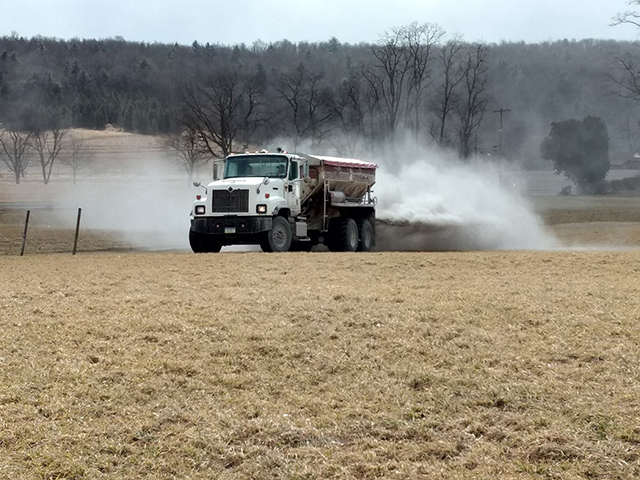
A "FRST" In Fertilizer Knowledge Sharing
ARS and its partners are creating a new online database aimed at collecting and sharing fertilizer information nationwide.
Fertilizer is an essential part of farming, but knowing what type of fertilizer to use, how much to put down, where, and at what time for best crop production can be a major challenge for growers. Adding in the need to maximize the amount of fertilizer nutrients that crops use to prevent loss to the environment, especially during quickly changing climate conditions, only makes efficient fertilizer management more complicated.
To help farmers improve planning for their fertilizer use, a team of experts, including ARS scientists, are developing an online national soil fertility database and decision support tool, called the Fertilizer Recommendation Support Tool or FRST.
"Fertilizer recommendations underpin modern crop production and are a key tool in a farmer's regular decision-making process," said Dr. Peter Kleinman, Research Leader of the Soil Management and Sugar Beet Research Unit in Fort Collins, CO. "Because fertilizer recommendations mostly vary by state, a farmer with land on two sides of a state border may face different recommendations. This is not only challenging to farmers, but also to regional or national programs that seek to promote best practices in fertilizer management."
 Adjusting the rate of fertilizer application is one of the most important nutrient management decisions a farmer may make. (Photo courtesy of Peter Kleinman, USDA-ARS)
Adjusting the rate of fertilizer application is one of the most important nutrient management decisions a farmer may make. (Photo courtesy of Peter Kleinman, USDA-ARS)
The FRST database aims to bring clarity and consistency to fertilizer recommendations for farmers, researchers, agronomists, and private laboratories. With FRST, they can make better informed decisions regarding fertilizer use and, therefore, balance objectives related to crop production and environmental quality.
"Any improvement in fertilizer management can be seen as an improvement in the efficiency and use of important resources; so, there's a long-term benefit to better fertilizer use which is to improve the sustainability of our resource management," said Kleinman. "There are different ecosystem services that can be impacted by fertilizer decisions. For instance, water quality, particularly accelerated eutrophication (the biological enrichment of water bodies by nutrients) is a long-standing concern that benefits from improved fertilizer use. Sound fertilizer decisions are good for farmers, consumers, and society at-large."
Data collected in this tool comes from researchers across the United States and includes phosphorous and potassium levels, locations, soil type, fertilization trends, and yield outcomes for specific crops. The database can be found within USDA's AgCROS system.
 Here, examples of tractor and truck mounted broadcast applicators are on display. (Photo courtesy of Ron Hoover, Penn State University).
Here, examples of tractor and truck mounted broadcast applicators are on display. (Photo courtesy of Ron Hoover, Penn State University).
The FRST initiative is a large collaborative project, led by scientists from North Carolina State University, Penn State University, University of Arkansas, and University of Kentucky, as well as ARS. FRST involves approximately 40 states, including land grant partners, public and private sector experts, and multiple USDA agencies (ARS, Farm Service Agency, and Natural Resources Conservation Service). This project is also extremely important to USDA, because many historical fertilizer trials were supported by USDA, indirectly or directly, and their data represents a societal investment that is now being preserved.
The FRST team is currently focusing on developing an App with an online interface to make it accessible to a diverse set of end users and support local, regional, and national efforts. Eventually, the tool will be broadened to reach farmers, growers, scientists, and others internationally. — By Olga Vicente, ARS Office of Communications.

